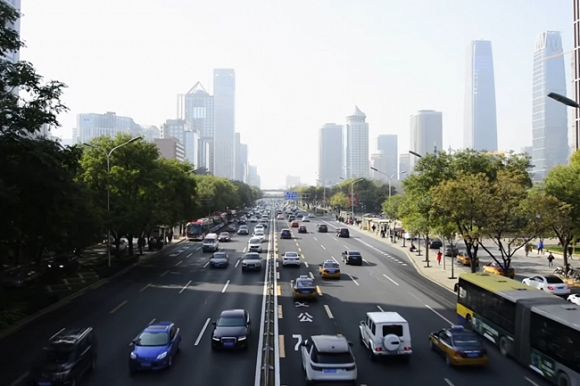Transitioning to electric vehicles will not just affect the cars we drive — it will be the biggest transport revolution since the horse-and-buggy days, but unlike that revolution, this one will catch many unawares, writes David Inkster.
AUSTRALIA IS ill-prepared for the transition to electric vehicles. Lulled by years of climate change scepticism at a federal level, the country does not fully recognise the changes that will be thrust upon us.
Phrases such as "carbon neutral by 2050" have conditioned us to think that significant changes are well into the future. Nothing could be further from the truth.
The impact of the Abbott Government declining to assist the car industry will haunt us. A lack of locally made facemasks was quickly rectified, but when it comes to motor vehicles, we are at the mercy of overseas manufacturers. This will become apparent in as little as five years' time — not the 20 to 30 years that denialists have led us to believe.
Transitioning to electric vehicles will not just affect the cars we drive, but the transport, mining and farming sectors, and the defence network as well. In short, it will be the biggest transport revolution since the horse-and-buggy days, but unlike that revolution, this one will be quick — it will catch many unawares and will not offer the option of "business as usual". It will be totally uncompromising, in that the old ways will cease to exist.
Critical component supply will kill the piston engine
The reason for this revolution is within the piston engine itself. All piston engines use piston rings and all but the simplest two-stroke engines – such as lawnmowers – use valves to control airflow.
These components are absolutely critical to the operation of the car engine and the manufacturing is so sophisticated that they are never made by the engine manufacturer, but by specialist suppliers.
The requirement for specialised materials, unique manufacturing processes and extreme surface finishes mean that manufacture of these components is limited to a small number of suppliers worldwide, and cannot be started without large investments. Wage costs are relatively unimportant, as the processes involved are already highly automated.
With major car makers announcing a change to electric vehicles within the next five to 15 years, the number of piston engines built will diminish. As a result, the makers of valves, piston rings and other specialty parts will face a terminally declining market.
There is no possibility of diversification. Demand for these products is almost zero apart from piston engine manufacture. In a manufacturing sector based on high volumes and low margins, even a 30 per cent decline in sales will mean an unsustainable business. Thus most of these specialty makers will be forced to cease business.
Those makers that attempt to demand higher prices for their components, will in turn significantly raise the overall cost of the piston engine and therefore the cost of the car or truck for which it is destined. So, the electric vehicle becomes progressively more attractive and the piston engine enters its death spiral.
How quickly will piston engines be phased out?
When Jaguar publicly announced (a year ago) that its whole range would be battery-electric by 2025, the manufacturer showed it is aware of a future supply problem — and it enabled the company to lock in a supply of critical components for the next three years. Most other car makers have also announced dates for a complete cessation of the piston engine, within the 2030 to 2035 time frame.
Makers who operate "just-in-time" manufacturing facilities to keep inventory costs low may not be as prescient as Jaguar and when their valve or piston ring supplier suddenly goes out of business, will find they won't be able to make engines. Therefore they cannot build the cars designed for those engines. There may be instances when production could cease almost instantaneously. Substitution of suppliers, or of engines, won't be possible at such short notice.
Piston engine production is about to enter a crisis of no return. Once the decrease in demand for critical components reaches a significant level of about 30 per cent, component makers will face the stark choice — to close immediately and salvage some value for their assets, or linger on for a year or so and get nothing.
The end result will be an avalanche of company closures. The demise of most component makers is inevitable — electric motors do not use valves and piston rings.
Beyond the car industry
This upcoming crisis has significance far beyond the car industry because those same critical components – that are used in car engines – are used in truck, tractor and locomotive engines. Even some ships and submarines will be affected. The only internal combustion engines unaffected will be turbines used in larger aircraft because they don't use valves and piston rings.
There are denialists who say things like: "They can’t just stop making diesel truck engines — someone will step in to fill the gap." Wrong!
Australia's trucks and tractors all come from overseas and makers already have electric tractors on the market, electric trucks in development, and electric conversions on offer. In fact, battery-electric vehicles and machines make a lot of sense in farming, mining and short-range delivery applications, where the electric vehicle remains close to a home base or recharge point.
The only difficult applications are those where a vehicle travels far from a recharge point or battery exchange point, such as long-distance road freight, rail freight and sea transport. This is where Australia finds itself the "unlucky" country. We are at the mercy of the rest of the world.
In Europe, a long-haul truck journey is 300 kilometres, well within battery range for an electric truck. In Australia however, many trucks need fuel for 2,000 kilometres or more. Our road transport sector will become a "Jurassic Park" of obsolete ageing diesel trucks, becoming more unreliable and totally dependent on costly diesel or synthetic diesel fuel.
Hydrogen or ammonia fuels will not solve these fuel problems because their lower density implies much greater volume for fuel tanks and reduced payload volume.
Railways are another area where Australia will find itself an orphan among developed nations. For long-distance freight and travel, we will suffer the same problems as road transport.
From an environmental viewpoint, it is preferable to prioritise rail over road transport because it uses one-third of the fuel and produces one-third of the carbon dioxide that road transport does.
Non-carbon fuels such as ammonia or hydrogen can easily be accommodated as extra tank wagons in a train. Ultimately, battery-electric locomotives are a future possibility, as are partially electrified rail lines in combination with hybrid diesel-electric power.
What should Australia be doing at a federal level?
For individuals, the electric car will take over almost as rapidly as the smartphone did, but governments in Australia will be faced with purchasing decisions which should have been made decades ago to ease the transition. Decisions like not buying submarines to be powered by obsolescent diesel engines.
The army will need to re-equip its forces with electric vehicles; tanks will become obsolete. In fact, the entire defence strategy will need reconsideration, because any military that relies on imported fossil fuels will be tragically compromised.
In short, it will be a time when everything must be questioned and the only certainty is that old ways of operating will fail.
There are two positive things that a federal government can do:
One is to set up facilities or modify existing refineries to manufacture synthetic diesel and aviation turbine fuel from atmospheric carbon dioxide and green hydrogen.
The second is to completely standardise, renovate and upgrade the entire Australian rail network. Forget high-speed trains; they gobble energy. Instead, provide excellent rail infrastructure for a medium-speed (100 kilometres per hour) national rail service, to minimise the amount of fuel used in transportation.
Such a rail upgrade will even provide employment opportunities for all the displaced coal miners!
David Inkster is an engineer and geophysicist who has worked at many organisations, including Chrysler Australia, Mitsubishi Motors Australia and Polymetals Mining Ltd.
Related Articles
- Autonomous vehicle services: The future has a long and winding road
- What Australia can learn from electric vehicle policies in Indonesia
- The Coalition’s foolhardy war on electric cars
- Electric vehicles threaten oil but are a boon for health
 This work is licensed under a Creative Commons Attribution-NonCommercial-NoDerivs 3.0 Australia License
This work is licensed under a Creative Commons Attribution-NonCommercial-NoDerivs 3.0 Australia License
Support independent journalism Subscribe to IA.













